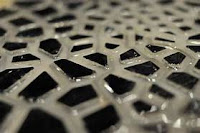NON WOVEN fabrics history
NON WOVEN – Introduction & History
Non Woven fabrics consist of fiber mats held together
because of their inherent properties or by mechanical
or chemical processes involving the use of chemical
bonding agent
NON WOVEN fabrics – Historical development
Felts made from wool or hair are the oldest fabricsmade by man. In early times, felts were made from animal hair
using various chemical aides like water, urine or by
mechanical means of trampling and beating.
Slowly other ways of forming the fabrics were
identified with wool as raw material, which had
much more uses than felt.
Why non woven fabrics?
- Cuttings and waste can be used.
- Properties displayed by conventional textiles are in excess of requirement
- Better utilization of individual fibre properties than in conventional textiles
- Desire to reduce the cost
Nonwovens
- Nonwoven products appeared in market during 1900-1950s.
- Nonwovens devloped simultaneously in North America, Western Europe and Japan.
- Until 1990’s the nonwoven production and application remained in these industrial sectors.
- Worldwide nonwoven market has tripled in 15 years. (2.2 million tonnes in 1994 to 4.5 million tonnes in 2004 and has increased to 6.5 million tonees in 2009).
DESIZING || HYDROLYTIC DESIZING
Application of Non woven
Potential of non woven fabrics
- Nonwovens have the potential to replace all flexible structures (containing, clothing, decorating, displaying, supporting, separating and filtering).
- They can provide innovative, cost-effective and sometimes unexpected answers to innumerable business challenges.
Nonwovens consumption in India
In the year 2002 the value of nonwovens consumed in India was $200 million. Per capita consumption of nonwoven is 0.001kg in India as compared to 2.25kg in developed countries.
Related Queries
-EXAMPLES OF NON WOVEN FABRICS
-NON WOVEN FABRIC PRICE
-NON WOVEN FABRIC FOR MASK
-TYPES OF NON WOVEN FABRICS pdf
-NON WOVEN FABRIC ROLL
-NON WOVEN FABRIC RAW MATERIAL
-CLASSIFICATION OF NON WOVEN FABRIC
-NON WOVEN FABRIC DEFINITION
 Reviewed by Suraj Gupta
on
February 02, 2021
Rating:
Reviewed by Suraj Gupta
on
February 02, 2021
Rating:








No comments: